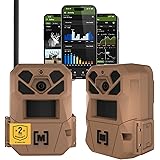Have you ever considered what you would do if someone sustained a serious injury in a remote wilderness setting? When professional medical help is hours, or even days, away, knowing fundamental wilderness medicine techniques can truly be life-saving. The video above provides an excellent demonstration of a single-rescuer stomach to back ‘spine-friendly’ roll, a critical skill for managing a patient found face-down, especially when a spinal injury is suspected. This technique is designed to move a patient with minimal movement to their spine, thereby preventing further injury until more advanced care can be provided.
Understanding Spinal Injury Risks in the Wild
The wilderness, by its very nature, presents an increased risk of trauma. Falls, impacts, and unforeseen accidents are unfortunately common. A fall from a height, a slip on rough terrain, or even being struck by a falling object can lead to a suspected spinal injury. The spinal column, housing the delicate spinal cord, is incredibly vulnerable. Any unnecessary movement after an injury could potentially worsen nerve damage, leading to paralysis or other severe, irreversible consequences.
Therefore, our primary objective in any wilderness emergency involving potential spinal trauma is to stabilize the patient and prevent additional harm. When a person is found unresponsive and face-down, especially after a fall or accident, the challenge becomes how to safely reposition them to assess their airway and breathing without compromising their spinal integrity. This is precisely where the single-rescuer stomach to back roll becomes indispensable.
When and Why to Perform a Spine-Friendly Roll
There are specific scenarios where this particular single-rescuer stomach to back roll is not just helpful, but absolutely essential. Consider a hiker found face-down and unconscious after a steep fall. Their airway might be compromised by their position or even by vomit. In such a situation, assessing and managing their airway takes immediate precedence. However, moving them without proper technique could exacerbate any spinal damage they might have sustained.
This technique is primarily employed when:
- A patient is found unresponsive and lying face-down (prone).
- Their airway is obstructed or potentially compromised due to their prone position, and you need to clear it or check their breathing.
- You need to perform a rapid primary assessment (checking for severe bleeding or other life threats) that requires them to be on their back.
The aim is to move the patient as a single unit, akin to rolling a log, ensuring their head, neck, and torso maintain a straight, neutral alignment throughout the maneuver. This minimizes any twisting or bending of the spine, which could otherwise lead to further neurological damage.
Crucial Steps for a Safe, Single-Rescuer Stomach to Back Roll
Executing the single-rescuer stomach to back roll effectively requires precise technique and thoughtful application of body mechanics. Expanding on the demonstration in the video, let us delve into each step with additional detail, ensuring a comprehensive understanding.
Initial Assessment and Positioning
Before any physical interaction, ensure the scene is safe for both you and the patient. Once assured of safety, approach the patient and kneel down, positioning yourself face-to-face with them. This proximity is critical; it allows for better control and communication (if the patient is conscious) and establishes a stable base for the maneuver. Furthermore, this initial assessment allows you to quickly check for any obvious immediate threats like severe bleeding or other injuries that might dictate alternative actions.
Strategic Arm Placement: Ensuring a Smooth Transition
The position of the patient’s arms is paramount for a smooth and “spine-friendly” roll. As shown in the video, the arm on the side opposite to you must be straightened and placed either alongside their body or extended above their head. The crucial point here is to prevent the arm from becoming an obstruction during the roll. If it’s bent and out to the side, it will act like an anchor, snagging on the ground and creating rotational force on the patient’s torso, which directly compromises spinal alignment. Conversely, tucking the arm in close to the body or extending it upwards facilitates the “log roll” effect, allowing the body to pivot as a unified mass.
Mastering Hand Placement for Control and Spinal Support
Effective hand placement is the cornerstone of maintaining spinal integrity during the roll. Your hand closer to the patient’s head should reach under their shoulder, wrapping around to cradle the back of their neck and head. This grip provides crucial in-line stabilization, keeping their head and neck aligned with their torso. Imagine your hand and forearm acting as a rigid brace, preventing any twisting or lateral bending of the cervical spine. Concurrently, your other hand should be placed firmly near the patient’s hip. You can either grasp a substantial amount of their clothing for a secure hold or apply direct pressure to the hip itself. The hip serves as a vital leverage point, allowing you to control the lower body’s movement and ensure it moves synchronously with the upper body.
Leveraging Your Body Mechanics: The Power of Your Legs
Perhaps one of the most overlooked aspects of rescue techniques is proper body mechanics. To perform the single-rescuer stomach to back roll safely for both the patient and yourself, get your knees as close to the patient as possible. This reduces the lever arm, minimizing strain on your back. The power for the roll should originate from your legs, not your back. By pushing off with your legs, you generate controlled, powerful movement, much like a weightlifter uses their legs to lift. This technique prevents rescuer injury and allows for a more controlled and smooth roll of the patient, which is essential for maintaining spinal alignment.
The Controlled Roll and Follow-Through
Once your body is positioned, your hands are secured, and the patient’s arm is correctly placed, initiate the roll by pushing off with your legs. Pull the patient towards you, moving them as a single, coordinated unit. The entire body – head, neck, shoulders, torso, and hips – should turn together, like rolling a rigid plank of wood. Do not simply let go once the patient is on their back. Maintain your grip on their head and neck, continuing to support them until they are fully settled and stable in the supine position. This sustained support is paramount to preventing any last-second, uncontrolled movements that could compromise the spine. Think of it as gently lowering them onto their back, rather than just rolling them over.
After the Roll: Post-Repositioning Care and Assessment
Successfully performing the single-rescuer stomach to back roll is a significant achievement in a wilderness emergency, but it is just the beginning of patient care. Once the patient is safely on their back, immediate priorities shift:
- Re-assess ABCs: Immediately check their Airway, Breathing, and Circulation. Ensure the airway is clear and open, check for adequate breathing, and assess for a pulse. Address any issues promptly.
- Perform a Secondary Survey: Conduct a thorough head-to-toe examination to identify any other injuries that may not have been immediately apparent. Look for bleeding, deformities, swelling, and assess sensation and movement in their extremities.
- Maintain Spinal Stabilization: Even after the roll, assume a spinal injury until proven otherwise by medical professionals. Continue to manually stabilize their head and neck, or use improvised stabilization methods if available, such as blankets rolled around the head.
- Protect from the Elements: Wilderness environments are harsh. Protect the patient from hypothermia or hyperthermia using insulation, shelter, and appropriate clothing.
- Monitor and Prepare for Evacuation: Continuously monitor the patient’s vital signs and level of consciousness. Prepare them for transport, ensuring they remain as stable and comfortable as possible while awaiting definitive medical care. Communication with emergency services, if feasible, is critical for coordinating evacuation.
Limitations and Continued Learning in Wilderness Medicine
It is important to acknowledge that while the single-rescuer stomach to back roll is an invaluable technique in wilderness medicine, it does have limitations. Ideally, a multi-rescuer ‘log roll’ with dedicated spinal immobilization equipment is preferred for suspected spinal injuries. However, in remote, single-rescuer scenarios, this technique serves as the best possible compromise, prioritizing airway management and preventing further spinal damage. This skill is not a substitute for professional medical care, but a crucial bridge to it.
Consistent practice of techniques like the single-rescuer stomach to back roll is essential for anyone venturing into the outdoors. Understanding not just ‘how’ but ‘why’ each step is performed will significantly enhance your confidence and effectiveness in a true emergency. Mastering wilderness medicine skills empowers you to act decisively, protecting yourself and others in challenging situations. The ability to perform a single-rescuer stomach to back roll correctly can be the difference between a minor injury and a life-altering consequence, underscoring its vital role in remote first aid.











